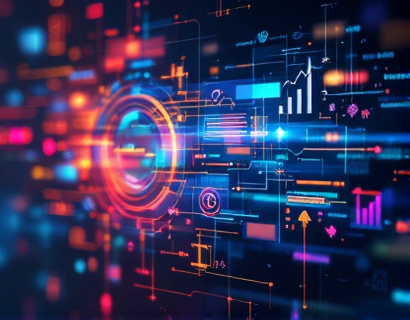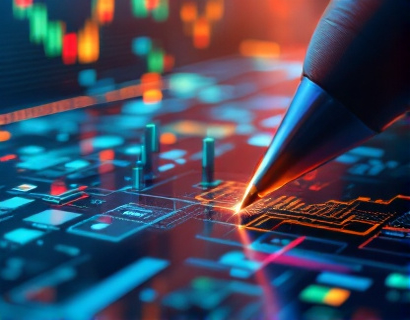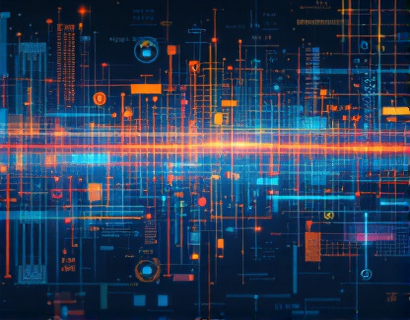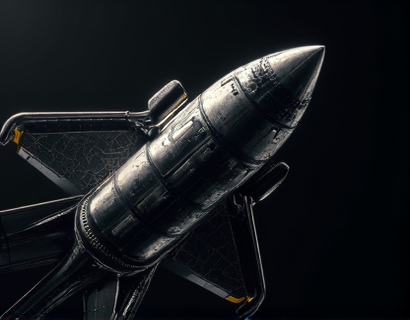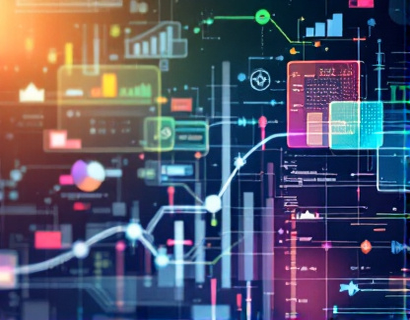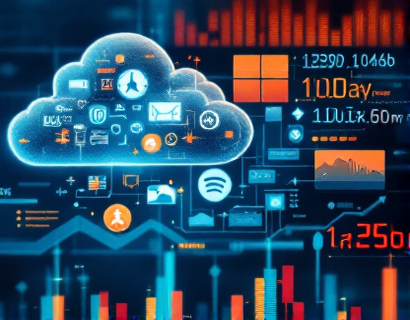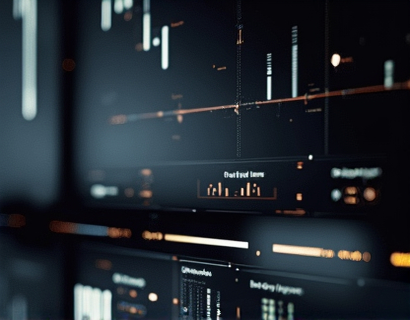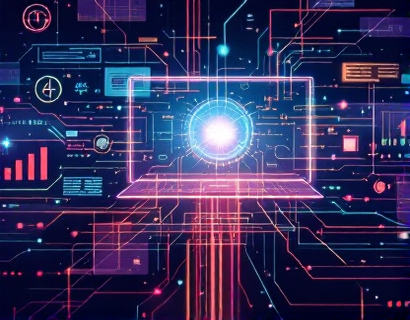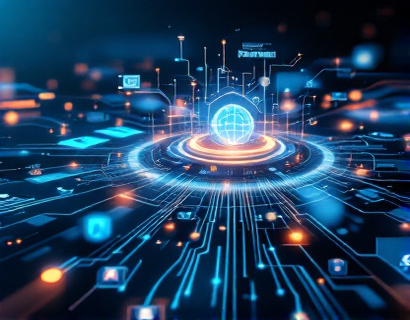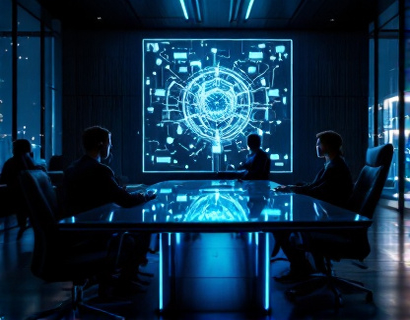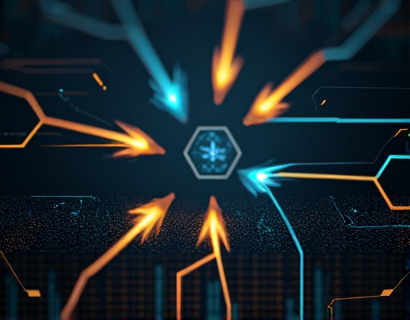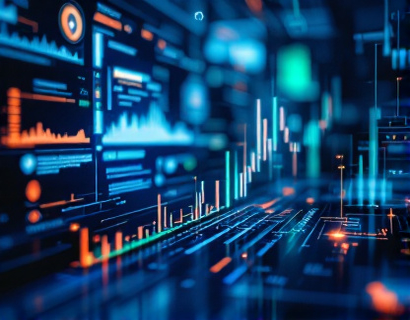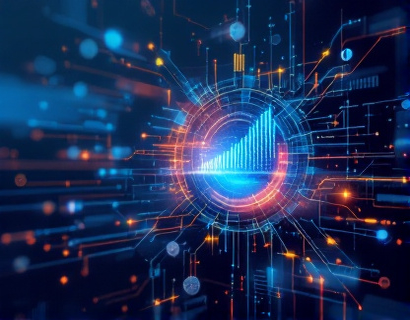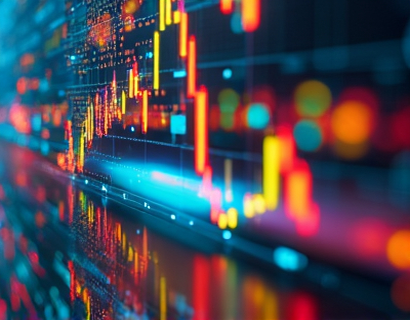Blockchain for Art: Revolutionizing the Preservation and Tracking of Historical Artifacts with Decentralized Solutions
The art world is on the cusp of a transformative era, driven by the integration of blockchain technology. This innovative approach promises to revolutionize the preservation and tracking of historical artifacts and artworks, ensuring their authenticity and provenance are verifiable and secure. By leveraging decentralized solutions, blockchain technology fosters trust and collaboration among collectors, museums, and cultural institutions, safeguarding our shared cultural heritage for future generations.
Blockchain, at its core, is a distributed ledger technology that records transactions across multiple computers in such a way that the registered transactions cannot be altered retroactively. This inherent characteristic makes it an ideal tool for the art world, where the authenticity and provenance of artworks are paramount. Traditional methods of verifying an artwork's history are often cumbersome, prone to fraud, and lack transparency. Blockchain offers a decentralized, immutable, and transparent alternative.
Verifying Authenticity and Provenance
The authenticity of an artwork is crucial for its value and legitimacy. Blockchain technology can provide an unbreakable chain of custody, documenting every transaction and ownership change since the artwork's creation. Each block in the chain contains a cryptographic hash of the previous block, along with transaction data, making it nearly impossible to alter any part of the record without detection. This ensures that the provenance of an artwork is tamper-proof and verifiable by anyone with access to the blockchain.
For instance, when an artist creates a piece, the blockchain can record the creation date, the artist's signature, and any relevant certificates of authenticity. As the artwork changes hands, each transaction is logged on the blockchain, creating a comprehensive and transparent history. Collectors and institutions can verify the artwork's authenticity by tracing its blockchain record, reducing the risk of purchasing a forgery.
Enhancing Trust and Collaboration
The art market is often characterized by a lack of trust and transparency, with numerous instances of fraud and disputes over ownership. Blockchain technology addresses these issues by providing a trustless environment where parties do not need to rely on intermediaries to verify transactions. This decentralized approach fosters collaboration among various stakeholders, including collectors, dealers, museums, and cultural heritage institutions.
For example, a museum acquiring a new piece can use blockchain to verify the artwork's history, ensuring it meets ethical and legal standards. This transparency builds trust among collectors and the public, as they can confidently support institutions that prioritize integrity. Similarly, collectors can verify the authenticity and ownership history of their purchases, reducing the risk of fraud and enhancing their investment confidence.
Safeguarding Cultural Heritage
The preservation of cultural heritage is a global concern, with many historical artifacts at risk due to conflict, natural disasters, and illicit trafficking. Blockchain technology can play a pivotal role in safeguarding these treasures by providing a secure and transparent record of their existence and location. By registering artifacts on the blockchain, institutions can create an indelible record that is accessible to authorities and the public, making it harder for illicit activities to go unnoticed.
For instance, during conflicts, blockchain can help track the movement of artifacts, ensuring they are not sold on the black market. After a conflict, the blockchain record can aid in the repatriation of stolen or looted items, providing a clear and verifiable history of ownership. This not only helps in recovering lost cultural treasures but also deters future illicit activities by increasing the risk of detection.
Streamlining Provenance Documentation
Traditionally, documenting an artwork's provenance involves a paper trail that can be lost, damaged, or manipulated over time. Blockchain simplifies this process by digitizing and securing the documentation. Each document, such as a certificate of authenticity, appraisal, or sale receipt, can be converted into a digital token and added to the blockchain. This creates a permanent and unalterable record that is accessible to all authorized parties.
The digital nature of blockchain records also makes them easier to manage and share. Institutions can upload high-resolution images, detailed descriptions, and other relevant data directly to the blockchain, creating a comprehensive digital archive. This not only enhances the accessibility of information but also reduces the physical storage requirements and risks associated with paper documents.
Facilitating Provenance Research
Researchers and historians play a vital role in understanding and preserving cultural heritage. Blockchain technology can significantly aid in provenance research by providing a centralized, tamper-proof database of artwork histories. Scholars can access a wealth of information with unprecedented ease, tracing the lineage of artifacts and artworks across centuries.
For example, a researcher studying a particular artist can use the blockchain to follow the journey of the artist's works, examining ownership changes, exhibitions, and critical receptions. This level of detail and accessibility can lead to new insights and a deeper understanding of art history. Additionally, the blockchain's transparency can help identify gaps in the record, prompting further investigation and preservation efforts.
Enhancing Market Transparency
The art market is notoriously opaque, with significant disparities in pricing and valuation. Blockchain technology can bring more transparency to this market by providing a transparent record of transaction prices, sale conditions, and market trends. This data can be used to establish more accurate valuations and pricing, benefiting both buyers and sellers.
For instance, a blockchain-based platform can aggregate data on recent sales of similar artworks, providing a benchmark for pricing new transactions. This transparency can reduce the influence of intermediaries who may inflate prices, making the market more fair and efficient. Collectors can make more informed decisions, and artists can receive fair compensation for their work.
Challenges and Considerations
While the potential benefits of blockchain in the art world are significant, there are also challenges and considerations to address. One major challenge is the adoption rate among traditional institutions, which may be hesitant to embrace new technology. Education and demonstration of the technology's advantages are crucial in overcoming this resistance.
Another consideration is the interoperability of different blockchain platforms. The art world may benefit from a standardized approach to ensure seamless integration and data sharing across various systems. Collaboration among stakeholders, including technology providers, institutions, and regulators, is essential to develop a cohesive framework.
Privacy is also a concern, as blockchain's transparency can sometimes conflict with the need for confidentiality in certain transactions. Solutions such as zero-knowledge proofs can be employed to maintain privacy while still ensuring the integrity of the blockchain record.
Future Prospects
The integration of blockchain technology in the art world is still in its early stages, but the potential for transformation is immense. As more institutions and individuals adopt this technology, we can expect to see a more secure, transparent, and collaborative art ecosystem. The preservation and tracking of historical artifacts will become more efficient, and our cultural heritage will be better protected for future generations.
Moreover, the intersection of blockchain and art can inspire innovations in other sectors, such as real estate, collectibles, and digital art. The principles of decentralization, transparency, and security can be applied to various industries, driving broader technological advancements.
In conclusion, blockchain technology offers a revolutionary solution for the art world, addressing longstanding issues of authenticity, provenance, and transparency. By embracing this decentralized approach, we can ensure the secure and sustainable preservation of our cultural heritage, fostering a future where art and history thrive together.




